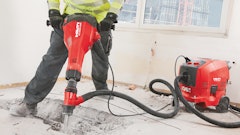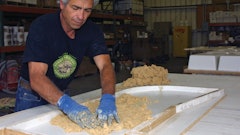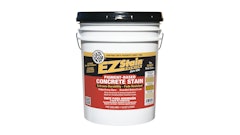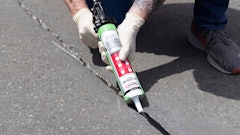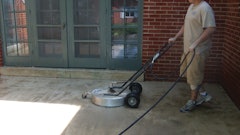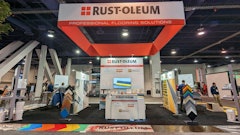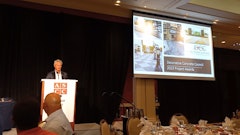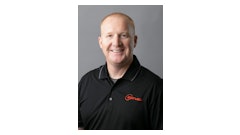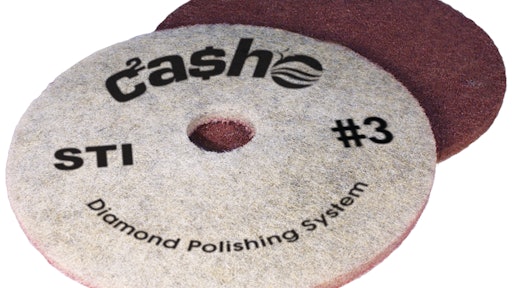
Polished concrete floors are one of the most durable, aesthetically pleasing and maintenance friendly floors available to the market today. However, over the years polished concrete has sometimes been sold as a “maintenance free” floor, which is completely untrue. With the proper daily maintenance, building owners can expect to keep their floors looking good at a comparatively lower cost than traditional flooring options. But even with the best cleaning schedule, polished concrete requires more than just traditional daily/periodical maintenance. It requires an organized maintenance plan of regular, mechanical and chemical maintenance.
Regular maintenance
Typical daily/periodical maintenance includes but is not limited to:
- Walk-off mats with regular cleaning and/or changing located at the entry points of the facility.
- Promptly cleaning spills to prevent staining and etching.
- Dry mopping or auto scrubbing the floor daily.
- General cleaning of the surface or spot treatment of more trafficked areas with plain water and when necessary cleaning agents that are non-reactive.
The above standards for daily/periodical maintenance are a good start, but polished concrete requires more than just keeping it clean. Polished concrete demands application-specific tools and good chemistry to maintain the durability and quality of shine to keep the finish looking the same as it did at initial installation. If a building owner neglects the suggested basic maintenance and the application specific tools and chemicals, then the quality of the shine is going to degrade rapidly over time.
Mechanical maintenance
Diamond impregnated pads are the application-specific tools that will mechanically maintain the floor’s polish. Usually these pads are made of synthetic or natural hair fibers and are sprayed with diamond powders, secondary abrasives and epoxy binders. These pads come in a variety of shapes and sizes to fit all models of floor buffers, burnishers and auto scrubbers. Depending on the manufacturer they can also be used wet or dry. These pads are readily available at janitorial supply companies, through online or local vendors, and in some cases directly from the manufacturer.
Chemical maintenance
Good chemistry is vital to prolonging the durability of polished concrete by hardening the polished surface. Many chemical companies that specialize in polished concrete maintenance products manufacture cleaners and conditioners that contain minerals that when introduced to the surface go to work hardening the floor. Usually these “conditioners,” as they are commonly known, contain mineral compounds such as silicates, calcium and potassium that work together with elements already present in the concrete that help give added protection against abrasion. Commonly these conditioners will be sold in concentrated form and can easily be diluted in water tanks of floor scrubbers or buffers. The reason manufacturers sell them in concentration is to save on shipping costs. Depending on manufacturer, interval of using the conditioners can range from weekly use to monthly or quarterly use.
Contractor advantage
Good housekeeping is crucial in maintaining a polished concrete surface, but as given above it is only part of the equation. For a floor that easily meets or surpasses its warranty period, building owners and maintenance contractors need to embrace advances in maintenance products to support the unique polished concrete surface.
Beyond simply meeting the standards of the warranty, contractors that perform polished concrete have the option of providing the tools and chemicals for maintenance to the building owners they work for. This is an ongoing concession for the vendor of the polished concrete and also a good insurance policy that the polished concrete will look great for years to come.
Contractors should do their own research to determine what maintenance pads and chemicals best fit their clients’ needs. For example, a facility that only sees 50 people throughout the day isn’t going to require the same maintenance or at the level of frequency as a facility that sees 5,000 on a daily basis. Being able to provide a specialized maintenance plan along with the latest chemicals and tooling will allow contractors to position themselves as experts on both installing and maintaining polished concrete while they strengthen their relationships with their clients.






